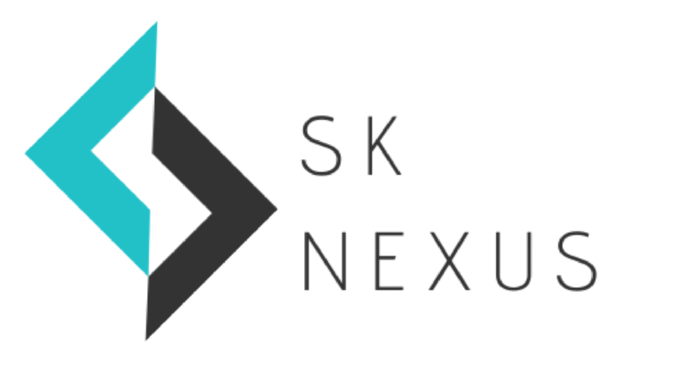Believe it or not, the structural frameworks of e-Learning (remote learning) were laid down in the 1970s after the establishment of the first online learning systems. The Open University in the UK has been one prime example that took the advantage of e-Learning (remote learning) to provide remote distance learning. Though the written and physical course materials were delivered by post, that too was changed after the emergence of the internet as correspondence was shifted via mail.
The first MAC in the 1980s also has its fair share of contribution to the world of learning. The unique piece of technology allowed any individual to possess a computer at home at the same time when virtual learning environments were picking up pace as people benefit from unlimited access to a wealth of online information.
It was the period of the 1990s when online courses became more popular in educational establishments as they reduced costs as well as helped bring education to a broader audience. COVID-19 did ring a drastic surge in the use of e-Learning platforms but nonetheless, the sector had already reached new heights with global edtech investments reaching US$18.66 billion in 2019 and projections for the overall market being at $350 Billion by 2025 (Source: World Economic Forum)
Understanding e-Learning (Remote Learning) In Simpler Words
e-Learning is the by-product of the integration between the education sector and the technology space.
A tool for enhancing the learning experience and teaching capacity through the use of communications technology. The technology allows for a cost-effective approach towards increasing access, quality and delivery of knowledge.
Some key benefits of e-Learning
- Access: The ability to provide access to information whenever at your convenience.
- Low cost of delivery: The production and management of information using IT tools help reduced costs in comparison to the traditional setup.
- Deep learning: Through application-based learning, students can engage in activity-based information that induces active and deep learning.
- Shared learning: One of the many benefits of e-Learning that it enables cross-cultural interaction.
Pakistan’s Attempt At Introducing e-Learning (Remote Learning)
Despite the pace of development of e-Learning platforms in the global sphere before Covid-19 unfortunately it could not become a part of the formal education in Pakistan until the rise of the pandemic outbreak.
Currently, most education institutions in Pakistan were forced to resort to e-Learning because of the national lockdown situation. But much yet is left to be explored in terms of teaching methodology for teachers and students alike. Issues pertaining to getting acquainted with the new technology and the acceptance of the virtual approach to teaching and learning is yet to explore in full depth.
Lack of government involvement and spending on such technology have resulted in Pakistan facing the lowest literacy rates globally. According to research by Ndubisi (2004):
“The investment in infrastructure, training IT staff, and content development is not enough for the successful adoption of e-Learning. Merely offering courses online and attempting to reproduce the classroom experience may cause unexpected difficulties. “
eLearn.Punjab was the first government e-Learning initiative in Pakistan that was launched back in 2014.
It is categorized as an official repository of free digitized textbooks, with access to augmented with videos. It also takes into account the offerings when a diverse curriculum is put into play for students of both rural and urban areas to make use of the powerful learning experience.
There are also other private entities engaged in imparting education through innovative ways, helping address the existing issues found in our educational system.
Prominent EdTech Startups in Pakistan
Edkasa
A startup founded by graduates of LUMS and Harvard that leverages mobile app technology to help high school students (Grade 9, 10, 11, and 12) prepare for Board of Intermediate and Secondary Education (BISE) exams covering all the twenty exam boards of the country.
The startup recently in the year 2021 raised $320,000 in pre-seed funding.
Muse by Sabaq
Utilizes technology to create engaging educational digital content for kids. It is aligned with Pakistan’s National Curriculum, which focuses on providing content based on animated video lessons, interactive exercises, live-shot lessons, story-based instructional content and teacher guides.
The curriculum has been successfully implemented in almost 1,000 formal schools and non-formal learning centres reaching over 100,000 children.
Orbit-ed
A startup that aims to revolutionize the learning process through 3D visualizations of the concepts, taught to students, in real world. The startup was shortlisted from over 280 applicants in the SC WomenInTech Programme, and won up to Rs1,500,000 in seed grant.
LearnOBots
LearnOBots is another example of an EdTech startup working and making cool and fun robots for learning and research. Their aim is to teach kids about Science, Technology, Engineering, Robotics, Arts and Mathematics (STREAM) using personal robot companions.
Challenges That Come With e-Learning In Pakistan
After the emergence of national lockdown across Pakistan several institutions shifted towards the use of e-Learning techniques widely known as Learning Management Systems (LMS) but given this was a recent new development several issues were noted in this transitory process:
Technical Obstacles
Issues pertaining to implementation and integration of e-Learning technologies which include installation, fast Internet connection, stable supply of electricity, management, maintenance, privacy, security, and absence of technical support.
Access to Laptops/Desktop Computers
Though in this day of age many educational facilities have a dedicated space for computers, the availability of personal computers or laptops at homes remains a challenge in most households in Pakistan and other developing nations.
Competency in the English Language
English has been the primary mode of communication in schools and an official language in Pakistan but when we talk about it being used as a medium for instruction, well that’s where the problem intensifies and causes serious limitations for promoting e-Learning.
Proficiency in the English language is needed for the students of Pakistan to understand and comprehend the contents of English written materials.
Computer Literacy
A basic understanding of technology and its application will significantly contribute towards the adoption of e-Learning. The more experience and interest a user has in using the Internet and computer, the more likely he/she will accept and make use of e-Learning.
Student Assistance
The learning curve to familiarize with e-Learning is not a straight upward slope. Students and teachers alike need more technical support to make the most out of the e-Learning platforms. One way of tackling this problem head-on is for educational institutions to employ a technical staff that is available round-the-clock for students as well as teachers.
Privacy and Security
The laptops or computers used by teachers or students must have the latest operating systems and anti-virus software to provide the security and privacy needed in today’s digital world.
Consider Subscribing For More Takes On Tech
The Future for e-Learning
As we’ve already discussed the opportunities and challenges faced by Pakistan in the domain of e-Learning, let’s jot down a few pointers that could help scale the efforts of bringing quality education through technology.
Bringing alternate solutions such as setting up a national TV channel dedicated and targeted towards students in primary schools, college students and university graduates could be a great initiative to promote access to education. A similar initiative was worked during the second lockdown when Radio Pakistan started a program “radio school” in an effort to promote virtual learning for primary-level students.
In the higher-education space, Virtual University has been instrumental in promoting virtual learning, for students running from bachelor’s to PhD level, in various subjects. The eLearn Punjab program, as previously discussed, has also played a vital role in generating educational content based on videos and illustrations for primary and secondary school classes. But it is important that we take the lessons learned from the pandemic situation and put them to effective use. There is a dire need to redesign learning spaces and revisit the curriculum to facilitate student learning.
Technical training for teachers is now more important than ever. Teachers and instructors should be equipped with the technical insight to run online classes smoothly. One thing the pandemic has taught us very well is that “the new normal” demands innovative, immersive learning technologies and modern education spaces using virtual, augmented, and mixed reality technology.
Hands-on learning in STEM, which broadly defines science, technology, engineering and math, needs to be integrated with the current curriculum in Pakistan. More focus should be on subjects that enhance critical thinking and adaptability, to prepare the students for the societal developments and changes that are about to come with the rapid pace of technological evolution.
The focus should be more on providing Internet facilities in remote and rural areas of Pakistan as well as reforms to bring more innovative, low-cost learning solutions, and creating more adaptive and effective methods of learning that appeal to the social fabric of our society.
As always if you enjoyed reading, we hope that you can share among interested people such as yourself.
Everything you see here – and more is powered by your Support. You can always pitch in by clicking the buttons below.
Experienced and energetic marketing specialist with over 7 years of experience – Khayyam loves to share his thoughts on startups, disruptive innovation, and whatever piques his interest.





